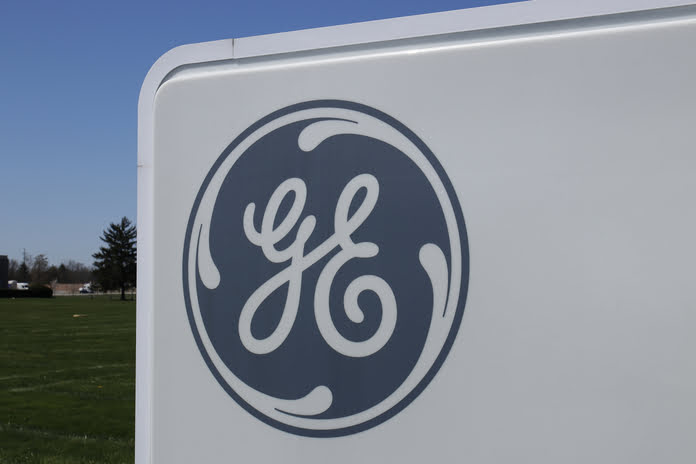General Electric Company (NYSE:GE)
After the completion of its major breakup in early 2024, General Electric (NYSE:GE) will rebrand itself as a pure-play in the aviation and defense industries. Is it a good time to buy GE stock now that it has reached a multiyear high?
The corporation is committed to achieving its goal of spinning off its energy division as GE Vernova at the beginning of 2024. This will make it possible for the “new GE,” the company’s jet-engine division, GE Aerospace, to emerge as a pure play in the aviation and defense industries.
On March 9, General Electric held an event for investors where they provided optimistic long-term outlooks for both GE Aerospace and GE Vernova. Because of this, GE stock reached a new high for the past 58 months on March 9th.
GE Aerospace is reaping the benefits of the uptick in passenger traffic on commercial airlines.
Early in the month of January, General Electric completed the separation of its healthcare operations, which are now conducted under the name GE HealthCare Technologies. (NASDAQ:GEHC). Late in 2021, the venerable corporation revealed that it would be splitting into three separate companies.
The quarterly profit for GE increased by 73%. GE’s renewable energy division performed poorly, which more than negated the company’s successes in the aviation and power industries.
Problems with supply chains and general economic unpredictability are causing headaches for industrial enterprises. Other challenges include the sharp increase in inflation, as well as the conflict between Russia and Ukraine.
GE Stock’s Big Rally
On March 31, GE shares broke above a 95.04 purchase point that was derived from a follow-on pattern that had been tight for three weeks. At the beginning of April, the stock price reached a high not seen in over five years.
Since then, the stock has had a pullback, but on April 10 it was attempting to recapture the follow-on entry. It continues to be higher than both the simple moving average of the last 21 days and the exponential moving average of the last 21 days.
A more secure purchasing opportunity might present itself in the event of a retreat to the 50-day/10-week line or the formation of a new base.
In the month of February, a successful breakout was achieved by General Electric’s share prices above the 84.12 level. On March 9, after management provided a positive prognosis for the aerospace industry, the stock reached its all-time high of 94.94.
Compared to the S&P 500’s gain of 7% so far this year, GE stock has increased by more than 43%.
Over the course of the past year, the relative strength line for GE stock moved higher, but it has been relatively stable since March. If the RS line is moving upward, this indicates that a stock is performing better than the S&P 500. In the chart that was presented, it is the blue line.
According to the IBD Stock Checkup tool, the industrial behemoth has been given a score of 75 out of a possible 99 for its IBD Composite Rating. The rating is a single score that incorporates important technical as well as fundamental characteristics.
The RS Rating for General Electric is 97, which indicates that the company’s stock has outperformed 97% of the other stocks that are included in IBD’s database over the course of the past year.
On Wall Street, GE continues to be one of the most sought-after stocks. There were 1,817 funds that owned shares as of December.
GE Earnings
GE stock receives an EPS Rating of 46 out of a best-possible 99, and an SMR Rating of C, on a scale that goes from A (best) to E (worst). These ratings are based on key earnings and sales measures. (worst). The earnings per share (EPS) rating is a comparison of a company’s increase in earnings to the growth of all other companies. The SMR Rating takes into account factors such as growth in sales and profits, as well as return on equity.
The aviation division of GE was the most profitable for the company during the fourth quarter. Its onshore wind division remained a revenue and profits burden for the company.
Wall Street experts forecast that GE’s earnings will drop by 25% per share in 2023, but that they will then surge by 97% the following year.
The level of free cash flow generated by GE’s activities is one of the key performance indicators that are regularly monitored. According to the statistics provided by FactSet, it saw a sharp decline in 2020, followed by a recovery in 2021 and then a decline in 2022.
On Wall Street, there are 21 analysts, and 14 of them recommend buying GE shares. There are seven people who have a hold, but none has a sale.
GE Aerospace
The aerospace division of GE, which is commonly referred to as the company’s “crown jewel,” produces jet engines and aviation systems for aircraft manufacturers such as Boeing. Additionally, GE Aerospace operates a fruitful aftermarket business that focuses on the repair and maintenance of engines.
During the pandemic, travel restrictions were implemented in an effort to stop the spread of the Covid-19 virus. These limits had a severe impact on aircraft deliveries and orders.
Due to the pandemic, there was a shortage of semiconductor chips and plastics, which caused difficulties for aerospace suppliers in meeting delivery deadlines for components and equipment. Aluminum and steel both saw their prices go up during this time.
Many of these obstacles have become less of an issue for GE Aerospace.
Featured Image: Megapixl









